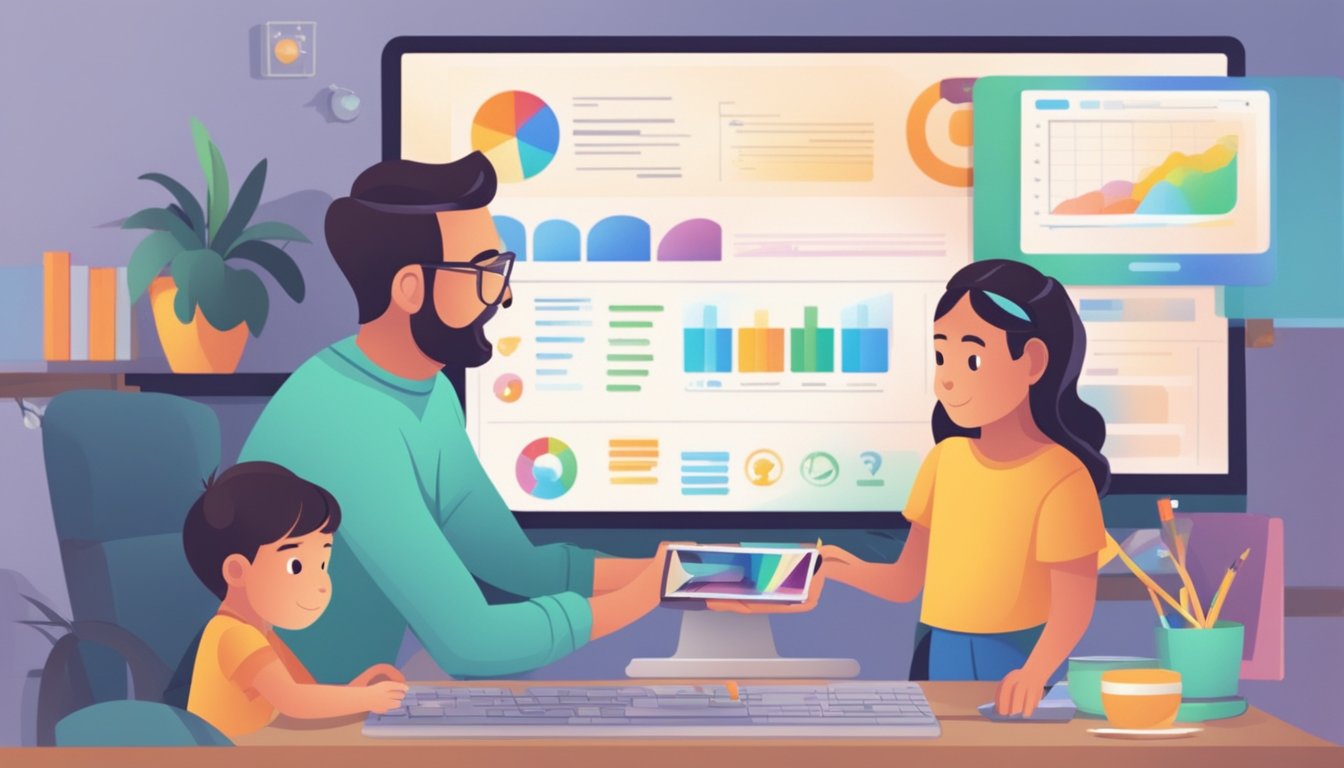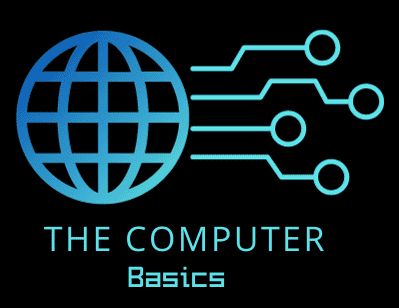Managing internet access at home is important for ensuring your family stays safe online. With the increasing amount of time spent on digital devices, setting up parental controls has become a must.
Parental controls let you decide when and how your family can use the internet, promoting safe and responsible internet usage. They’re easy to set up, and most routers have these options already built in.
You can schedule internet access times, block certain websites, and even pause the internet in shared spaces to encourage offline activities. By using these features, you’re teaching your family about balance and setting an example for how digital devices should enhance life, not control it.
Various apps and services can help enhance these parental controls. These tools offer more detailed insights and control over what your family can access. Staying informed about these options keeps your home network safe and helps your family maintain healthy online habits.
Key Takeaways
- Set up controls on your router for internet safety.
- Manage internet time to encourage offline activities.
- Use apps for advanced parental control features.
Setting Up Your Home Network for Parental Controls
To manage internet access effectively in your home, setting up parental controls on your network is crucial. This process involves selecting the right router with parental control features, accessing its settings, and creating user profiles for family members to tailor internet access.
Choosing the Right Router
When looking for a router with parental controls, consider brands like Netgear or Asus. These often come with features designed for managing internet access. Look for routers that offer options such as content filtering, scheduling access times, and monitoring devices connected to your network.
A good router with parental controls can block inappropriate content or limit the internet to certain hours. This helps keep your kids’ browsing safe and suitable.
Read product reviews to find a router that fits your needs. Make sure it has reliable performance and receives regular software updates for maintaining security and functionality.
Accessing Router Settings
To set up parental controls, you’ll need to log into your router settings. Most routers can be accessed by typing 192.168.1.1 or a similar IP address into a web browser.
Once logged in, navigate to the parental controls section. This is usually under the Basic or Advanced settings tabs. Here, you can adjust content filters and set internet access schedules.
Check the router’s user manual or the manufacturer’s website for detailed instructions if you’re unsure. Tools may vary between routers from different brands, so getting familiar with your specific router model is essential.
Creating Profiles for Family Members
Profiles let you customize internet settings for each family member. Start by logging into the parental controls section of your Wi-Fi router. Then, create a profile for each person by clicking the “Add” button.
Assign devices to user profiles, so internet restrictions apply to specific devices. Name each profile, like “Kids” or “Office,” to keep things organized.
You can set browsing filters and schedule internet downtimes for these profiles. This way, you can ensure that your child’s devices have different rules than your own, keeping them safer online. Adjust these settings as your children grow or their needs change.
Implementing Basic Parental Control Features
Setting up parental controls is an essential part of managing internet access in your home. Key features include content filters, blacklists, and SafeSearch to help block inappropriate content and protect your family.
Enabling Content Filters
Content filters are a great way to block inappropriate content automatically. Most internet service providers offer these filters as part of their parental control features. By activating them, you can prevent access to websites with adult content, hate speech, or gambling.
Some routers and browsers have built-in filters that you can manage easily through settings. Adjust these settings to block specific types of content or choose from predefined categories. For example, you can opt to block sites categorized as violent or sexually explicit. These filters help ensure safer browsing for everyone at home.
Using Blacklists and Whitelists
Blacklists and whitelists give you more control over web access. A blacklist blocks specific websites you deem inappropriate. This can be useful for sites not caught by general filters. On the other hand, a whitelist restricts internet usage to only the approved sites you add.
When setting up a blacklist, consider websites that contain material you don’t want your family to access. You can typically update this list in your router’s or browser’s settings. Meanwhile, a whitelist is ideal for young kids since it allows browsing only pre-approved websites. This approach ensures that your children stay within safe online boundaries.
Setting Up SafeSearch
SafeSearch is another critical tool in managing internet access. It automatically filters search results to remove explicit content, making search engines safer for kids. To enable SafeSearch, go to the settings of popular search engines like Google or Bing.
Once activated, SafeSearch blocks images, videos, and websites that are inappropriate. While it’s quite effective, it’s not foolproof, so combine it with other parental control tools for the best results. You can also lock SafeSearch settings to prevent changes by tech-savvy kids. It’s a straightforward way to enhance safety during online searches.
Advanced Controls and Internet Time Management

Controlling internet access at home isn’t just about blocking sites. You can pause the internet, set screen time limits, and schedule access for activities like homework. This keeps your family focused and ensures everyone’s online time is productive and safe.
Pausing Internet Access
Pausing internet access is useful when you need everyone’s attention. Many routers let you pause Wi-Fi with a simple tap or click. This feature is great during mealtimes or family gatherings.
When you pause the internet, all connected devices lose access, ensuring undivided attention for important moments. Some routers even allow you to pause access for specific devices, which can be handy if just one person needs a break from the screen.
Setting Screen Time Limits
Setting screen time limits helps manage how long each person can spend online daily. Routers with parental controls let you create profiles for each family member. You can set daily or weekly limits for specific apps or websites.
These limits encourage balanced internet usage and help prevent excessive screen time. For example, you can allow time for educational apps while limiting social media. Screen time control fosters healthier habits and ensures online activities are beneficial. Some systems also offer reports showing how time is spent online, providing insights to adjust limits as needed.
Scheduling Internet Access for Homework
Scheduling internet access can help establish a routine for doing homework. By setting specific times when the internet is available, you create a structured environment conducive to studying.
Many routers offer this feature under parental control settings. You can block distracting sites during homework periods while allowing access to educational resources.
This approach not only helps in focusing on assignments but also teaches time management skills. With homework scheduling, kids can develop a habit of completing tasks within a set timeframe, paving the way for better productivity.
Using Parental Control Apps and Services

Parental control apps offer tools to manage your family’s online safety. These solutions can help block inappropriate content, group devices, and set rules for internet use in your home. From third-party apps to built-in controls, there are options to fit your needs.
Exploring Third-Party Parental Control Apps
Third-party parental control apps like Net Nanny and Family Link are great choices for monitoring and managing your child’s internet access. These apps let you filter websites, monitor screen time, and even track your child’s location.
Apps often feature customizable settings to help you block inappropriate content. They may also provide alerts for suspicious activity. Before choosing an app, ensure it’s compatible with devices in your home. Reviews and trials can help in selecting the best fit for your family’s needs.
Leveraging Built-In Operating System Controls
Many devices already have built-in controls for managing family safety. Apple’s Screen Time and Windows‘ Family Safety provide robust options without additional costs. These controls let you set limits on app usage, restrict access to adult content, and monitor activity.
iOS devices offer Screen Time, which allows you to schedule downtime and place limits on apps. Android’s Family Link lets you manage apps and set device limits from your own phone. Built-in controls are handy when you want straightforward tools without downloading extra software.
Integrating Parental Controls with Smart Devices
You can extend parental controls beyond smartphones and tablets by using smart devices like routers. Services like OpenDNS make it possible to control internet access at the network level, applying restrictions to any device connected to your Wi-Fi.
Setting up parental controls on smart devices means grouping all family gadgets under a single control system. Devices like the Google Assistant can help manage these controls. Your router might already have options for filtering content and setting usage times, which adds an extra layer of protection and convenience.
Addressing Internet Safety and Responsible Usage

Ensuring kids stay safe and responsible online involves setting strict content restrictions, shielding them from cyberbullying, and teaching them about internet security. By using parental controls, you can create a safer online experience for your kids. It’s not just about blocking content; it’s about enhancing their understanding of safe internet use.
Preventing Access to Inappropriate Websites
Parental controls are a great way to block inappropriate websites. You can set filters on your home Wi-Fi using settings available on most routers. Brands like NETGEAR and Linksys offer tools to block specific domains and keywords, making it easier to control internet use at home.
Also, browsers like Google Chrome and Firefox let you activate safe search settings. Safe search can filter out explicit content from search results, providing an extra layer of protection. By combining these browser settings with parental controls, you give your kids a safer browsing experience.
It’s also wise to periodically check the filter settings to adapt to your growing child’s online needs. This step helps keep the online experience age-appropriate as they mature.
Protecting Against Cyberbullying
Cyberbullying can have a serious impact on kids’ well-being. Start by having open conversations about what cyberbullying looks like and why it’s harmful. Encourage your kids to speak up if they experience or witness any form of bullying online.
Use parental controls to monitor and manage your child’s interactions on social media and messaging apps. Some monitoring software lets you see what kind of messages your child is receiving and from whom.
In addition, many platforms provide features to report bullying behavior. Teach your kids how to use these features. Educating and empowering them to take action can reduce the impact of cyberbullying and help them feel in control.
Educating Kids About Internet Security
Internet security is about understanding risks and knowing how to avoid them. Teach your kids the importance of strong passwords and how to recognize phishing attempts. You can set up child-safety tools available in major operating systems, such as those found on Mac and Windows, to add a layer of protection.
Explain why it’s vital not to share personal information online. Reinforce the practice of logging out from all accounts when done.
Regular discussions about safe internet practices help kids realize why these measures are important. Adapt these conversations as they grow, so they always stay informed about evolving online threats.

